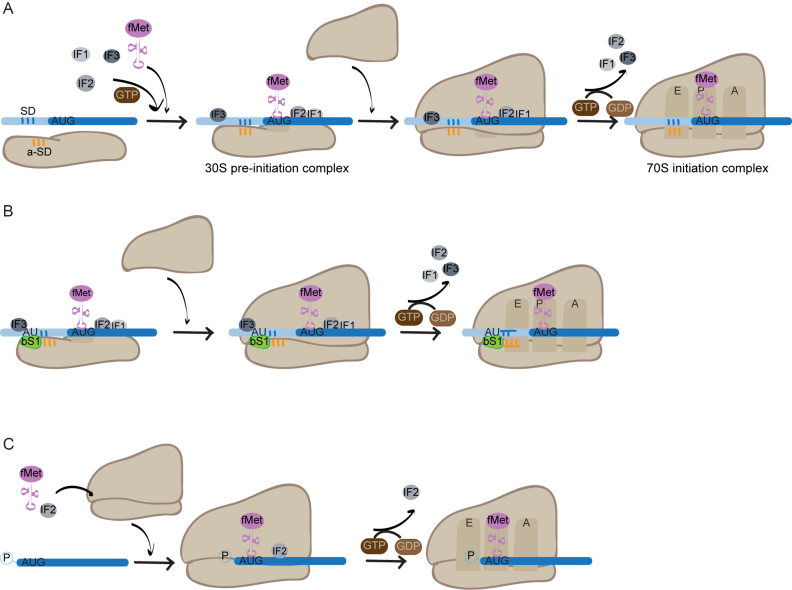Figure 2.
Mechanisms of translation initiation in bacteria. (A) Mechanism of canonical SD initiation involving recruitment of the 30S subunit through the SD - a-SD interaction. Formation of the 30S pre-initiation complex occurs by binding of IFs1–3 and the initiator tRNA, fMet-tRNAfMet, to the 30S subunit of the ribosome. The SD sequence (represented in blue) is then selected and binds the a-SD sequence (represented in orange) in the 16S rRNA. Recognition of the AUG start codon triggers the stabilisation of fMet-tRNAfMet binding. The 50S subunit docks on the pre-initiation complex and GTP hydrolysis by IF2 results in dissociation of the IFs and tightening of the 70S complex ready for translation. (B) Mechanism of initiation involving the interaction between ribosomal protein bS1 and AU rich elements in the mRNA. This mechanism operates when either a weak SD sequence is present, or it is totally absent. Formation of the 30S pre-initiation complex is mediated by direct interaction of ribosomal protein bS1 with AU-rich elements situated upstream from the SD sequence. (C) Mechanism of initiation of leaderless translation. IF2 and the initiator tRNA bind independently to the 70S ribosome, leaderless mRNA is recruited through recognition of its 5′ phosphate group and AUG start codon. Following GTP hydrolysis by IF2, the IF dissociates, and the complex is committed for translation.

